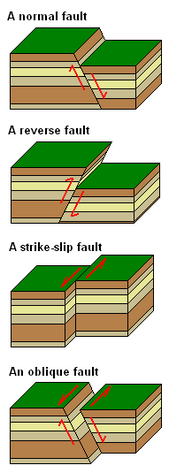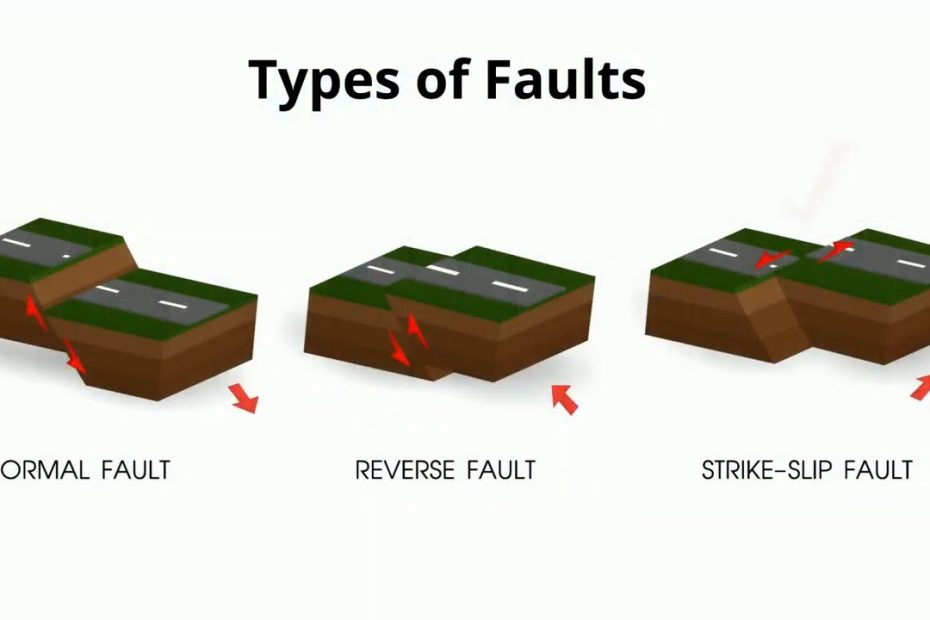What Are The 4 Types Of Faults: A Comprehensive Guide
Types Of Faults In Geology
Keywords searched by users: What are the 4 types of faults why do normal faults occur, What is fault, thrust fault, compare folding and faulting as responses to stress, oblique faults, what is a normal fault, 3 types of faults, which type of fault is located along the san andreas fault
What Are The 4 Parts Of A Fault?
A fault is composed of four essential elements that collectively define its structure and behavior. First and foremost is the fault plane, which serves as the primary arena of geological activity. This fault plane is a relatively flat surface, which can either be vertically oriented or exhibit a noticeable slope. This surface interacts with the Earth’s crust, giving rise to a prominent feature known as the fault trace – a linear mark on the Earth’s surface that corresponds to the position of the fault below. In addition to these two critical components, the fault also includes the hanging wall and the footwall. The hanging wall is positioned above the fault plane, while the footwall is situated below it. These four elements, when considered together, provide a comprehensive understanding of the structure and dynamics of a fault.
What Are The 3 Main Types Of Faults?
The Earth’s crust is dynamic, consisting of tectonic plates that constantly shift and interact. This movement can lead to the occurrence of earthquakes, primarily attributed to three main types of faults: normal faults, reverse faults (also known as thrust faults), and strike-slip faults. Each type of fault represents a distinct way in which rocks on either side of a fracture move in relation to each other. Normal faults involve downward movement, reverse faults exhibit an upward thrust, and strike-slip faults see horizontal sliding past one another. Understanding these fault types is crucial in comprehending the mechanics behind seismic activities and their potential impacts on regions prone to earthquakes.
What Are The Different Types Of Force Faults?
Certainly! Here’s a revised paragraph with added information to help readers better understand the different types of fault forces:
“Faults are geological features that occur when there is movement along the Earth’s crust, and they can be categorized into several types based on the forces involved. One type of fault is known as a normal fault, which forms due to tensional forces when rocks are pulled away from each other. In contrast, reverse faults develop as a result of compressional forces, causing rocks to move towards each other. Another category is strike-slip or transform faults, where rocks slide past each other horizontally. These strike-slip faults can be further classified into two subtypes: dextral (right-lateral) and sinistral (left-lateral), depending on the direction of movement. The forces responsible for the occurrence of strike-slip faults can be either compressional or extensional, leading to rocks slipping parallel to each other. It’s important to note that the Earth’s dynamic forces continually shape its crust, giving rise to these various types of faults, which play a significant role in understanding geological processes and seismic activity.”
Discover 43 What are the 4 types of faults






Categories: Collect 72 What Are The 4 Types Of Faults
See more here: qua36.com

There are four types of faulting — normal, reverse, strike-slip, and oblique. A normal fault is one in which the rocks above the fault plane, or hanging wall, move down relative to the rocks below the fault plane, or footwall.The main components of a fault are (1) the fault plane, (2) the fault trace, (3) the hanging wall, and (4) the footwall. The fault plane is where the action is. It is a flat surface that may be vertical or sloping. The line it makes on the Earth’s surface is the fault trace.There are three main types of fault which can cause earthquakes: normal, reverse (thrust) and strike-slip.
- Tensional stress is when slabs of rock are pulled apart. …
- Compressional stress is when slabs of rock are pushed together. …
- Shear stress is when slabs of rock slide past each other horizontally in opposite directions.
Learn more about the topic What are the 4 types of faults.
- Fault Systems
- what is the parts of fault – Brainly.ph
- Earthquakes – UCL
- Faults • GeoLearning • Department of Earth Sciences
- Geological Faults: Definition, Causes & Types – Video & Lesson Transcript
- The Fault in our Lands – ArcGIS StoryMaps
See more: https://qua36.com/category/cooking blog
